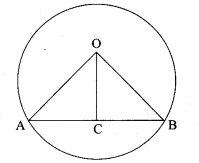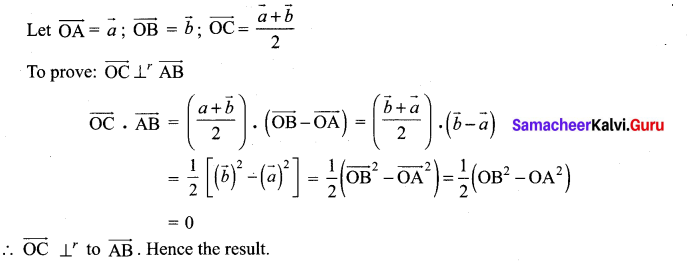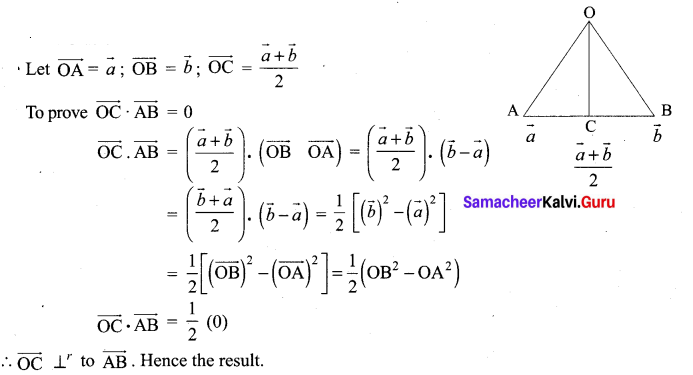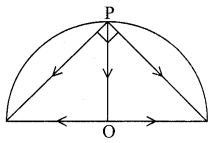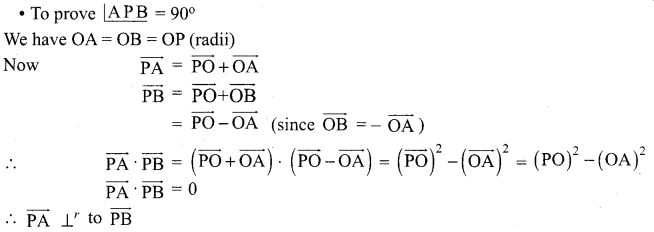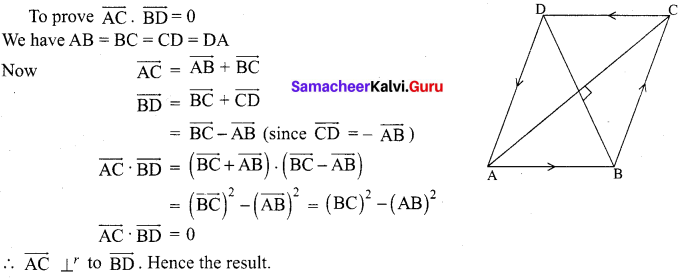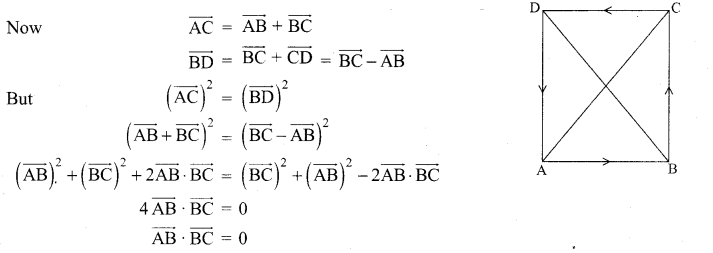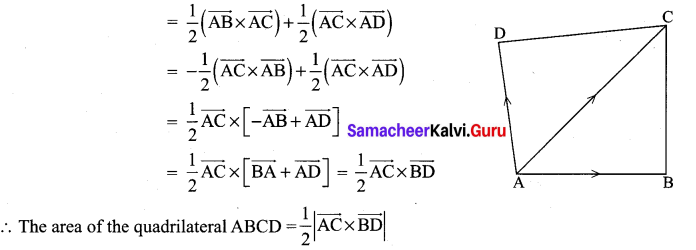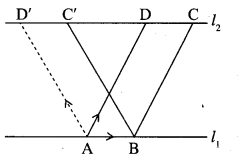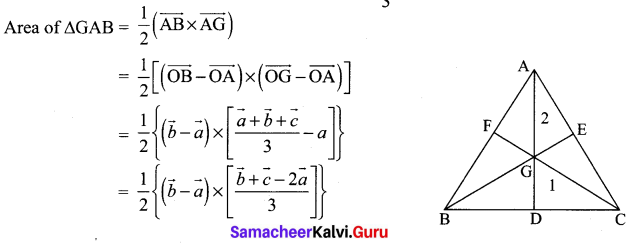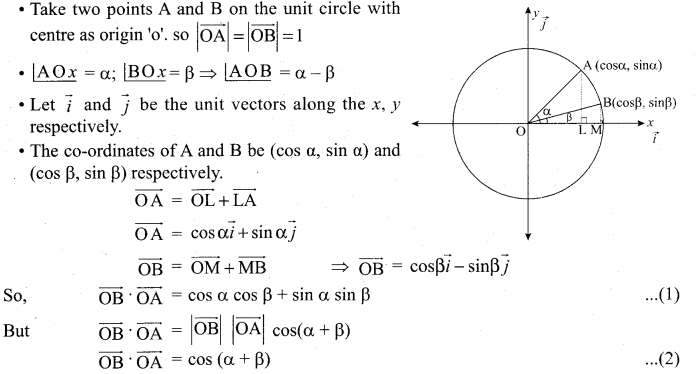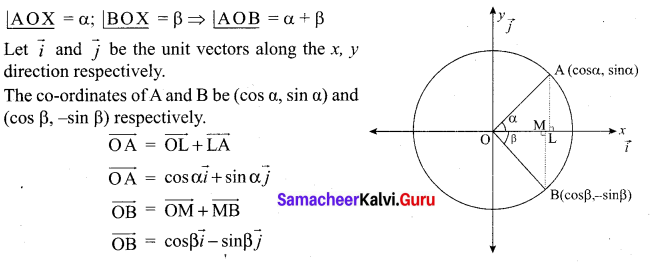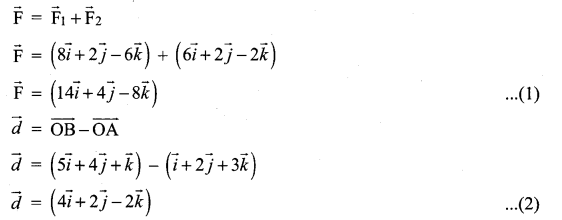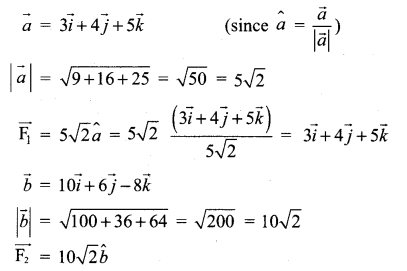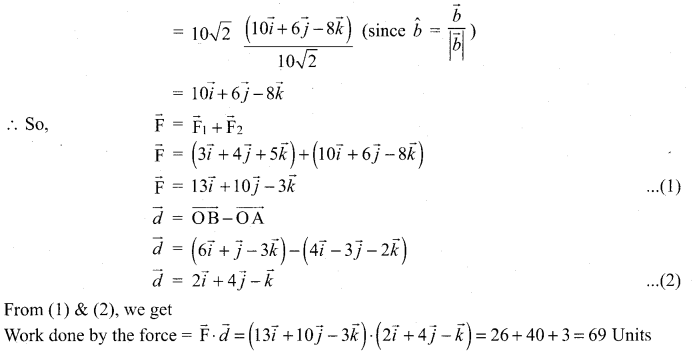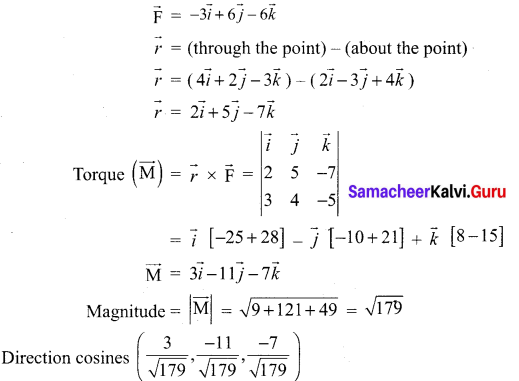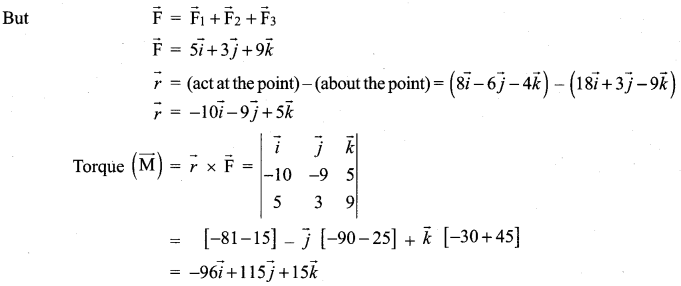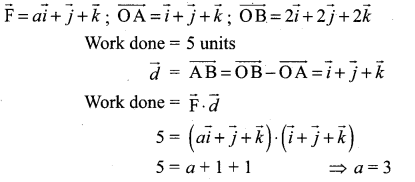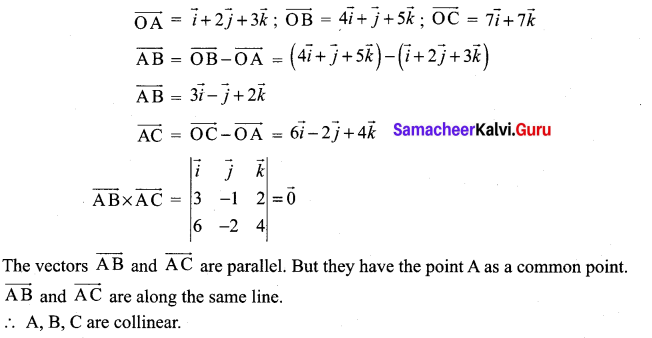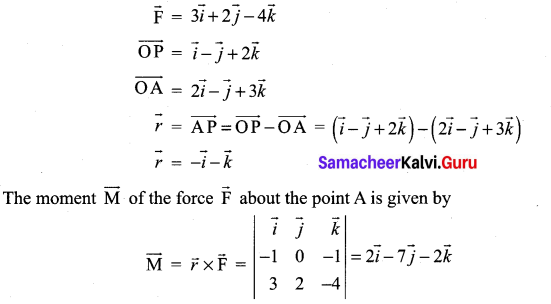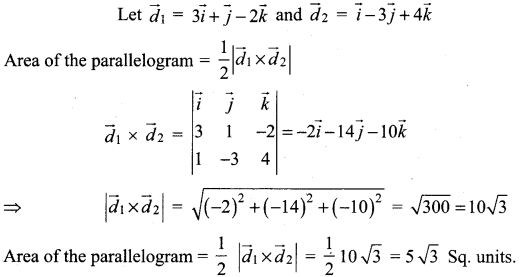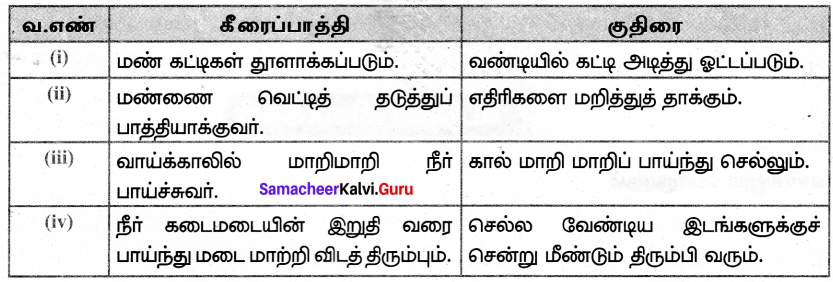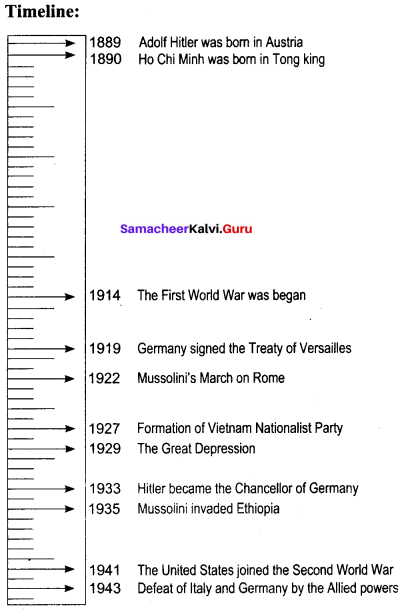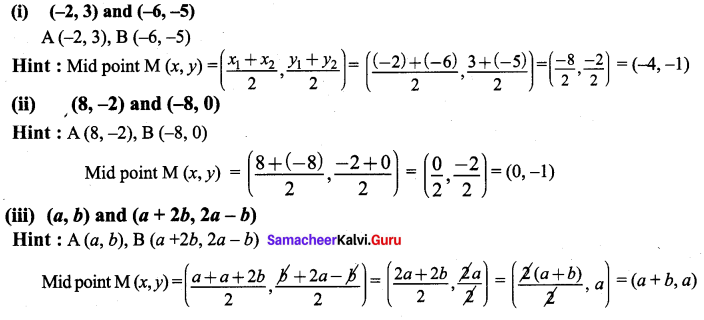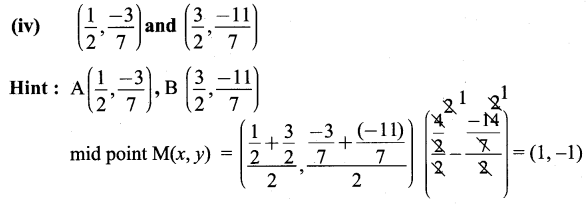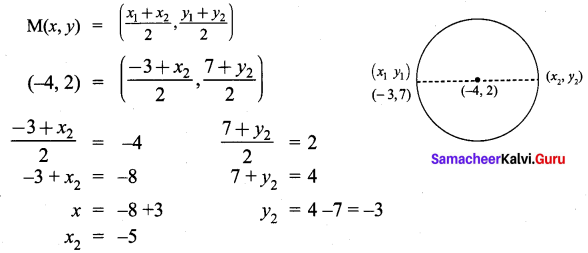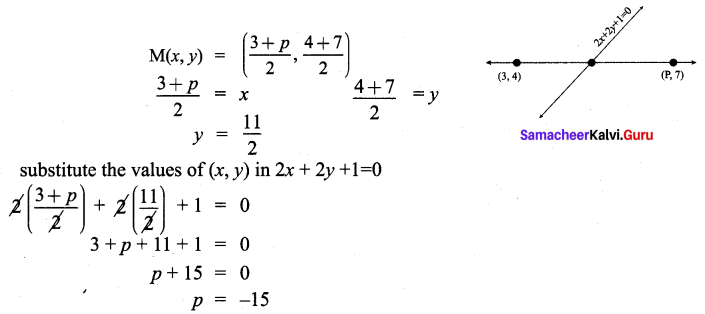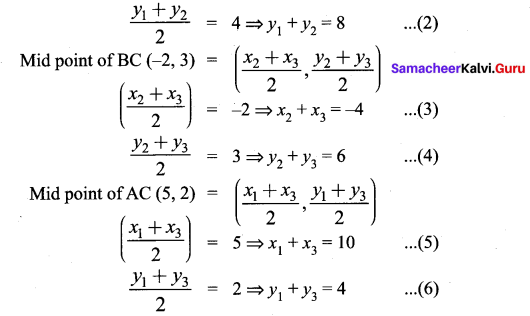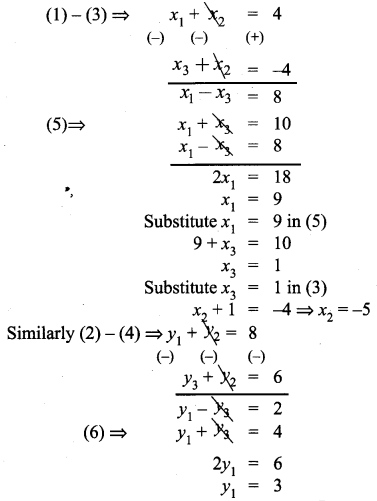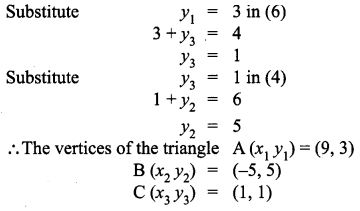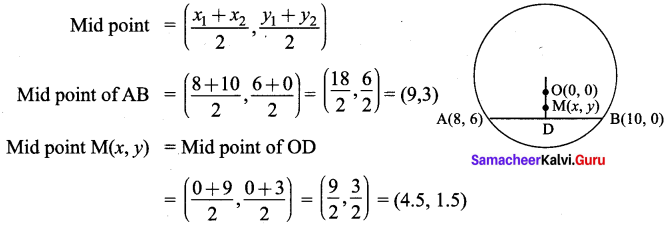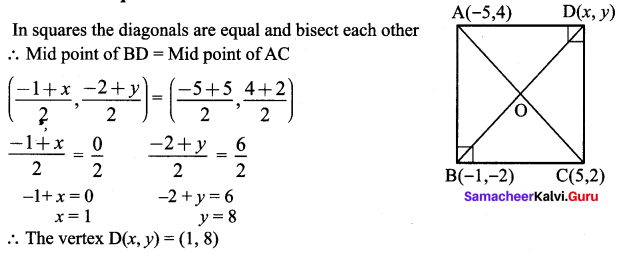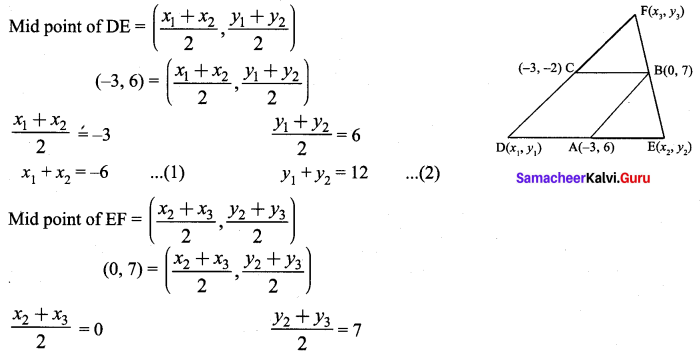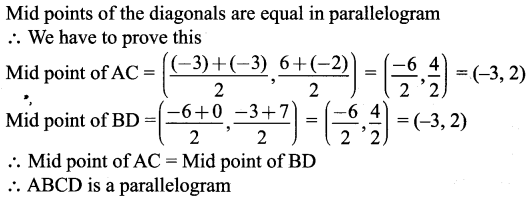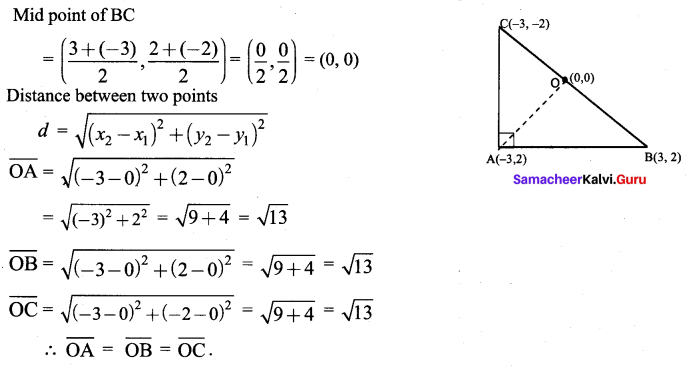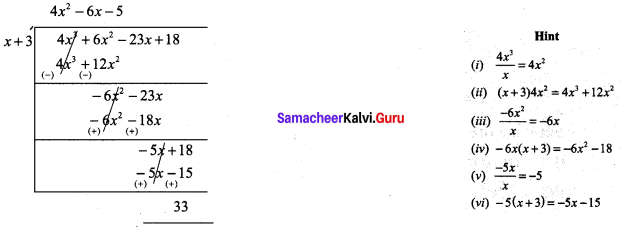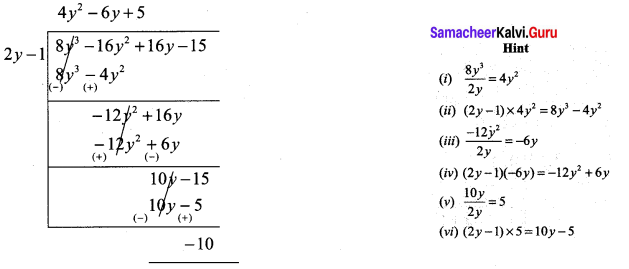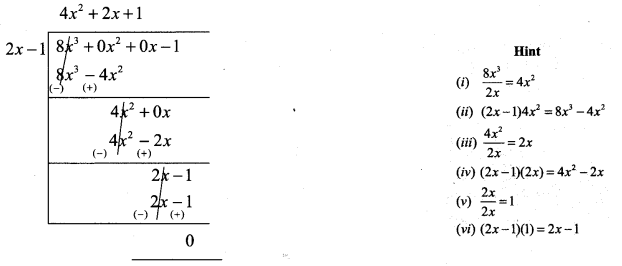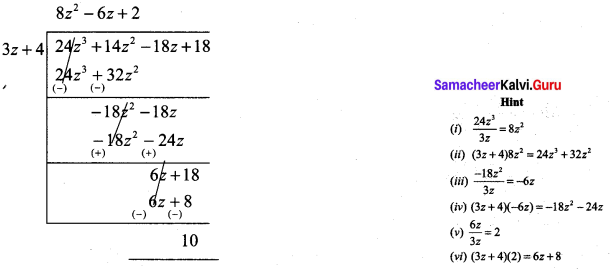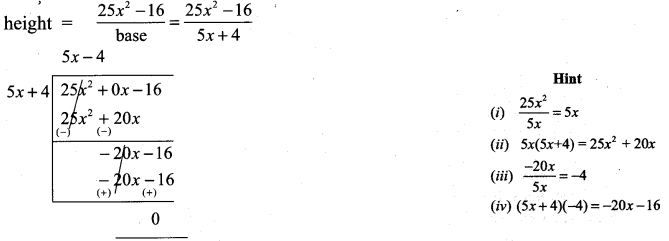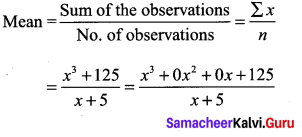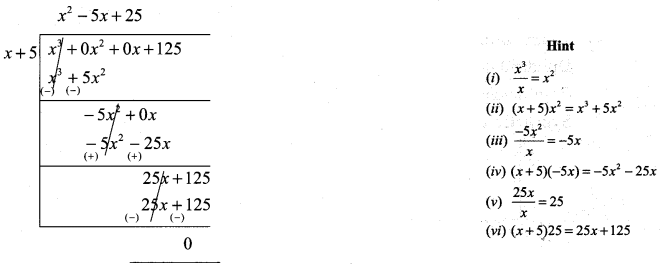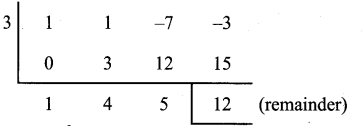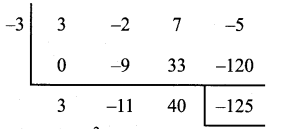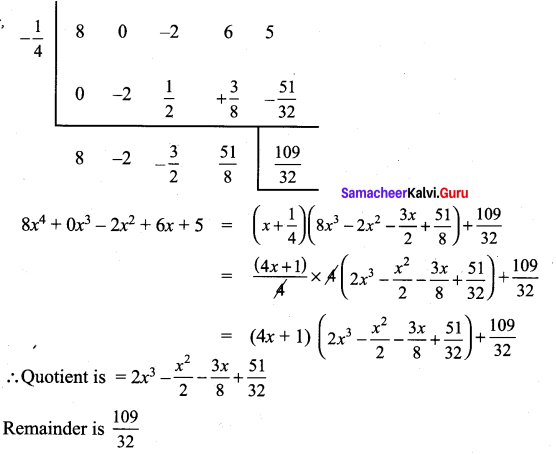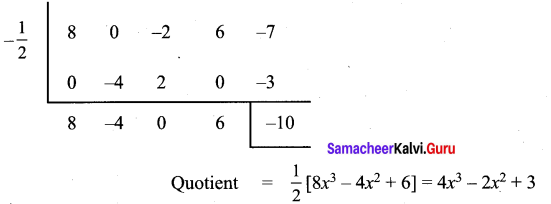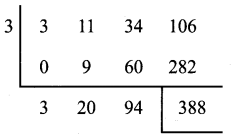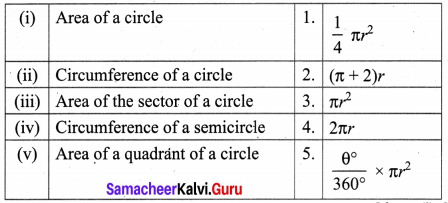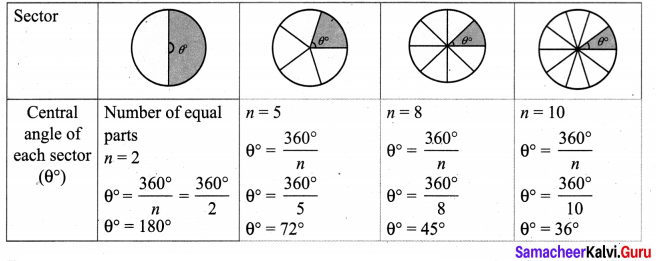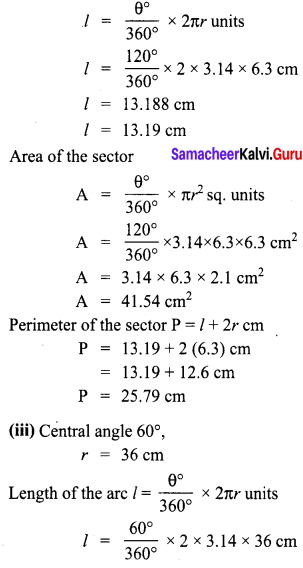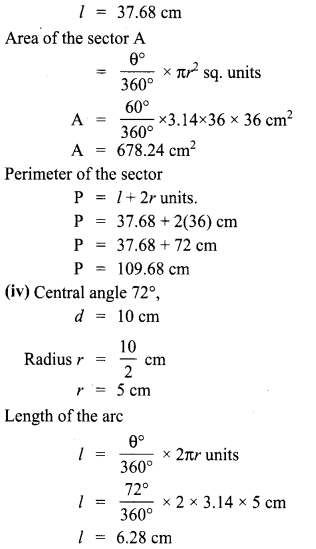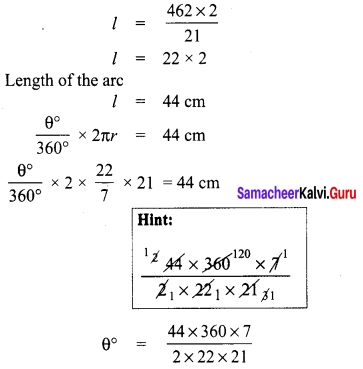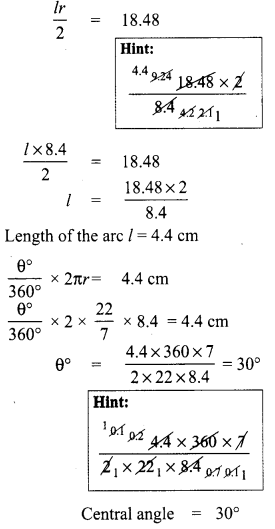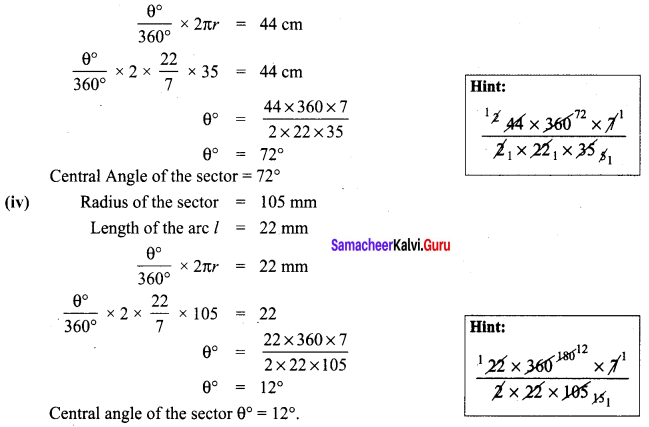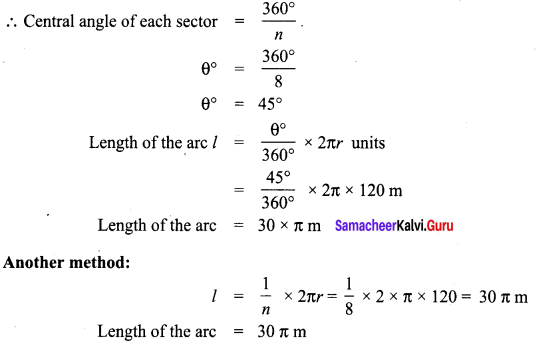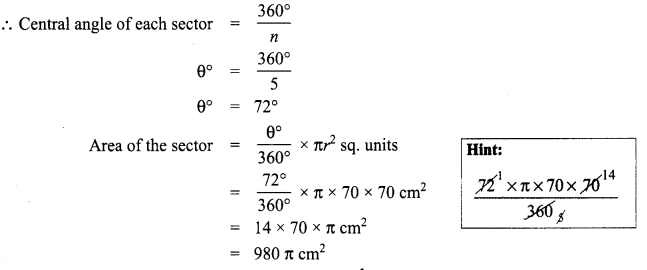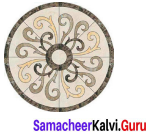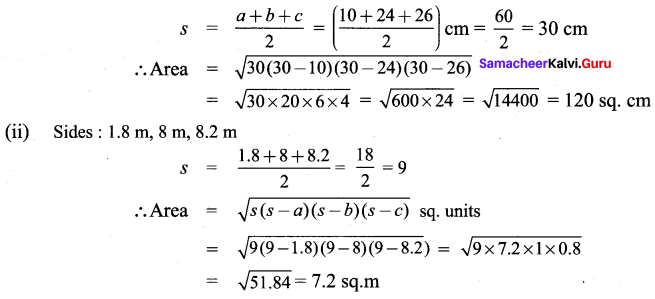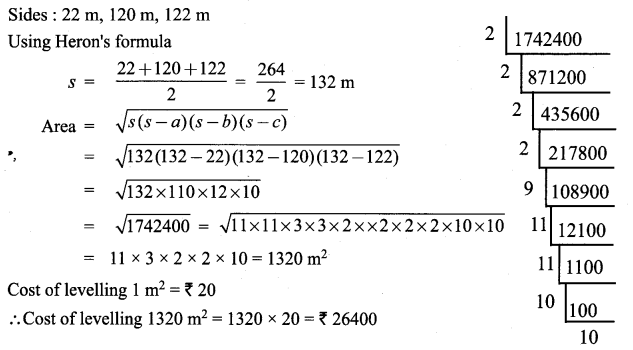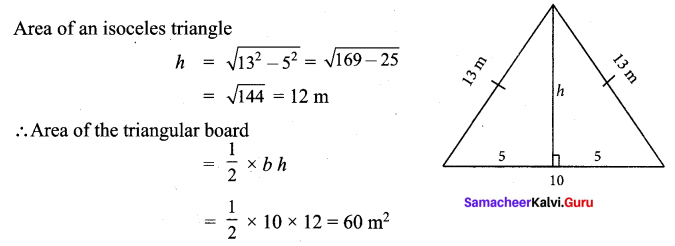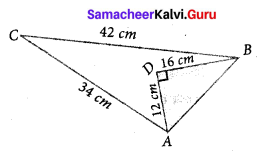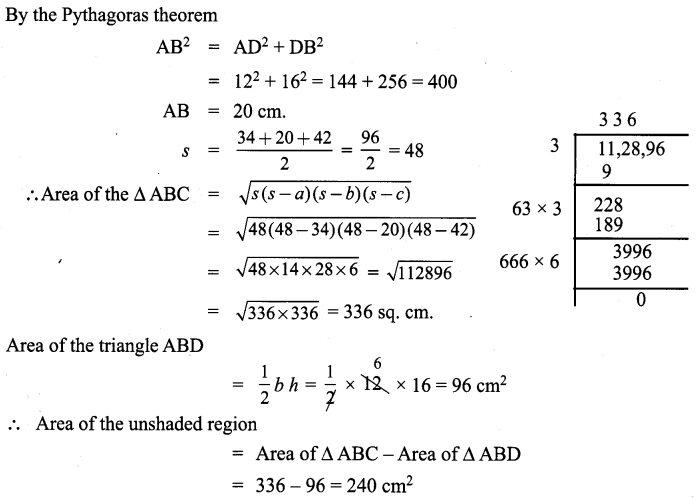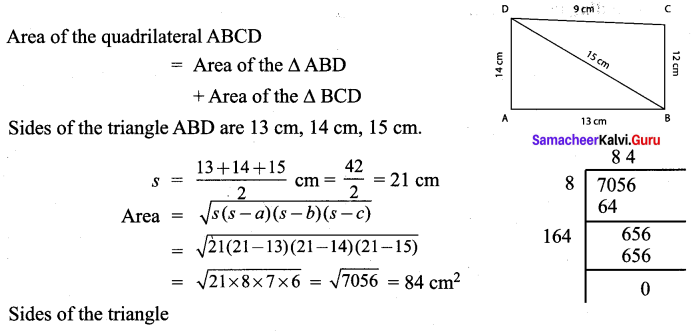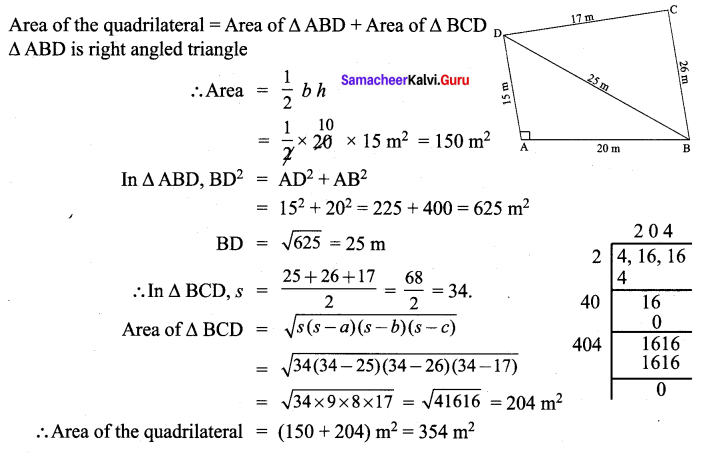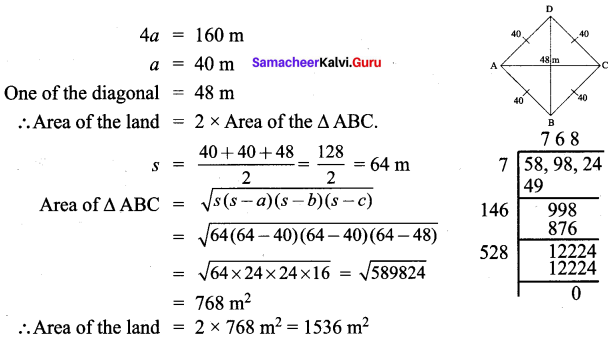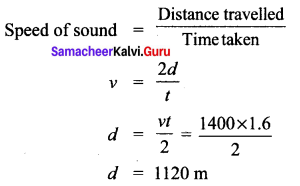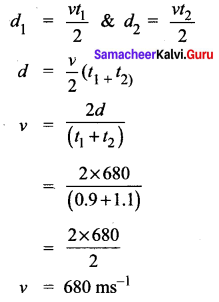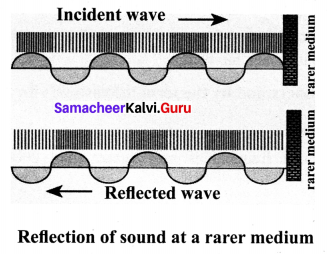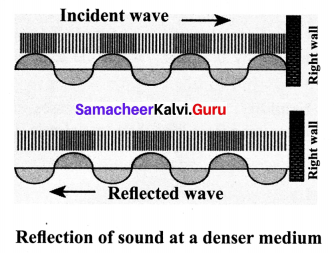Students can Download Tamil Chapter 2.5 நால்வகைக் குறுக்கங்கள் Questions and Answers, Summary, Notes Pdf, Samacheer Kalvi 7th Tamil Book Solutions Guide Pdf helps you to revise the complete Tamilnadu State Board New Syllabus and score more marks in your examinations.
Tamilnadu Samacheer Kalvi 7th Tamil Solutions Term 1 Chapter 2.5 நால்வகைக் குறுக்கங்கள்
மதிப்பீடு
சரியான விடையைத் தேர்ந்தெடுத்து எழுதுக.
Question 1.
‘வேட்கை’ என்னும் சொல்லில் ஐகாரக்குறுக்கம் பெறும் மாத்திரை அளவு ………
அ) அரை
ஆ) ஒன்று
இ) ஒன்றரை
ஈ) இரண்டு
Answer:
ஆ) ஒன்று
Question 2.
மகரக்குறுக்கம் இடம் பெறாத சொல் .
அ) போன்ம்
ஆ) மருண்ம்
இ) பழம் விழுந்தது
ஈ) பணம் கிடைத்தது
Answer:
ஈ) பணம் கிடைத்தது
Question 3.
சொல்லின் முதலில் மட்டுமே இடம் பெறுவது ……………..
அ) ஐகாரக் குறுக்கம்
ஆ) ஔகாரக் குறுக்கம்
இ) மகரக் குறுக்கம்
ஈ) ஆய்தக் குறுக்கம்
Answer:
ஆ) ஔகாரக் குறுக்கம்
குறுவினா
Question 1.
ஔகாரம் எப்பொழுது முழுமையாக ஒலிக்கும்?
Answer:
ஒள, வௌ என ஒளகார எழுத்து, தனித்து வரும் இடங்களில் தனக்குரிய இரண்டு மாத்திரை அளவில் முழுமையாக ஒலிக்கிறது.
Question 2.
சொல்லின் முதல், இடை, இறுதி ஆகிய இடங்களில் ஐகாரக்குறுக்கம் பெறும் மாத்திரை அளவு யாது?
Answer:
- ஐகாரம் சொல்லின் முதலில் வரும்போது ஒன்றரை மாத்திரை அளவில் ஒலிக்கும்.
- ஐகாரம் சொல்லின் இடையிலும் இறுதியிலும் வரும்போது ஒரு மாத்திரை அளவில் ஒலிக்கும்.
Question 3.
மகரக்குறுக்கத்துக்கு இரண்டு எடுத்துக்காட்டுகள் தருக.
Answer:
மகரக்குறுக்கம் என்பதன் விளக்கம் :
(i) மகரமெய் (ம்) 1/2 மாத்திரை அளவுடையது.
(ii) இம் மகர மெய்ண கர, னகர அதாவது ண, ன மெய்களின் பின்னும் வகரத்திற்கும்
அதாவது ‘வ’ என்னும் எழுத்திற்கு முன்னும் வரும்போது தன் 1/2 மாத்திரை அளவிலிருந்து குறைந்து 1/4 மாத்திரை அளவில் ஒலிக்கும். இதற்கு மகரக்குறுக்கம் என்று பெயர்.
எடுத்துக்காட்டு : மருண்ம், போனம், தரும் வளவன், பெரும் வள்ளல் ஆகியவை கால் மாத்திரை அளவில் ஒலிப்பன.
கற்பவை கற்றபின்
Question 1.
ஐகார, ஔகார, மகர, ஆய்தக் குறுக்கங்களுக்கு எடுத்துக்காட்டாக அமையும் சொற்களைத் தொகுத்து எழுதுக.
Answer:
(i) ஐகாரக்குறுக்கம் :
வையம், ஐம்பது, ஐந்து, சமையல், தலைவன், வளையல், பறவை, கடலை, திண்ணை
(ii) ஔகாரக்குறுக்கம் : ஔவை, வௌவால்
(iii) மகரக் குறுக்கம் :
வரும் வண்டி, போண்ம்
வலம் வந்தான், மருண்ம்
(iv) ஆய்தக்குறுக்கம் :
முள் + தீது – முஃடீது.
கல் + தீது – கஃறீது
கூடுதல் வினாக்கள்
சரியான விடையைத் தேர்ந்தெடுத்து எழுதுக:
Question 1.
வலம் வந்தான் என்பதில் மகர மெய்யெழுத்தை அடுத்து வகர எழுத்து வருவதால் மகர
மெய்யானது தனக்குரிய ………………… அளவில் இருந்து ………………. மாத்திரை அளவில் ஒலிக்கிறது.
அ) 1/2 மாத்திரை, 1/4 மாத்திரை
ஆ) 1 மாத்திரை 1/2 மாத்திரை
இ) 2 மாத்திரை 1 மாத்திரை
ஈ) 2 மாத்திரை 1 மாத்திரை
Answer:
அ) 1/2 மாத்திரை, 1/4 மாத்திரை
Question 2.
அம்மா, பாடம் படித்தான் ஆகிய சொற்களில் மகர மெய்யெழுத்து தனக்குரிய …………….
மாத்திரை அளவில் முழுமையாக ஒலிக்கிறது
அ) 1/2 மாத்திரை
ஆ) 1/4 மாத்திரை
இ) 1 மாத்திரை
ஈ) 11/2 மாத்திரை
Answer:
அ) 1/2 மாத்திரை
Question 3.
‘வௌவால்’ – இச் சொல்லில் பயின்று வரும் குறுக்கம் யாது?
அ) ஐகாரக்குறுக்கம்
ஆ) ஒளகாரக்குறுக்கம்
இ) மகரக்குறுக்கம்
ஈ) ஆய்தக்குறுக்கம்
Answer:
ஆ) ஔகாரக்குறுக்கம்
Question 4.
” சமையல்’ – இச்சொல்லில் ‘ஐகாரம்’ எத்தனை மாத்திரை அளவு குறைந்து
ஒலிக்கிறது?
அ) 1/2 மாத்திரை
ஆ) 1 மாத்திரை
இ) 11/2 மாத்திரை
ஈ) 2 மாத்திரை
Answer:
ஆ) 1 மாத்திரை
Question 5.
‘வையம்’ – இச் சொல்லில் பயின்று வரும் குறுக்கம் யாது?
அ) ஐகாரக்குறுக்கம்
ஆ) ஔகாரக்குறுக்கம்
இ) மகரக்குறுக்கம்
ஈ) ஆய்தக்குறுக்கம்
Answer:
அ) ஐகாரக்குறுக்கம்
Question 6.
பல் + தீது என்பது
அ) பஃறீது
ஆ) பல்தீது
இ) பலதீது
ஈ) இவை ஏதுமில்லை
Answer:
அ) பஃறீது
விடையளி :
Question 1.
குறுக்கம் என்றால் என்ன?
Answer:
சில எழுத்துகள் சில இடங்களில் தமக்கு உரிய கால அளவைவிடக் குறைவாக ஒலிக்கும்.
இவ்வாறு குறைந்து ஒலிக்கும் எழுத்துகளைக் குறுக்கங்கள் என்கிறோம்.
Question 2.
குறுக்கம் எத்தனை வகைப்படும்? அவை யாவை?
Answer:
குறுக்கம் நான்கு வகைப்படும். அவை :
- ஐகாரக்குறுக்கம்
- ஒளகாரக்குறுக்கம்
- மகரக்குறுக்கம்
- ஆய்தக்குறுக்கம்
Question 3.
ஔகாரக்குறுக்கம் என்றால் என்ன?
Answer:
- ‘ஒள’ என்னும் உயிர்நெடில் தன்னைக் குறிக்கும் போது இரண்டு மாத்திரை அளவு ஒலிக்கும்.
- சொல்லில் வரும்போது ஒரு மாத்திரை அளவே ஒலிக்கும்.
- இங்ஙனம் குறுகுவதால் இதனை ஒளகாரக் குறுக்கம் என்பர்.
எடுத்துக்காட்டு : ஒளவை, மௌவல், வௌவால். - ஔகாரக்குறுக்கம் சொல்லின் முதலில் மட்டும் வரும்.
Question 4.
ஆய்தக்குறுக்கம் என்றால் என்ன?
Answer:
- அஃது, எஃகு ஆகிய சொற்களில் ஆய்த எழுத்து, தனக்குரிய 1/2 மாத்திரை அளவில் முழுமையாக ஒலிக்கும்.
- முள் + தீது – முஃடீது எனவும்
அல் + திணை – அஃறிணை எனவும் சேரும். - இச்சொற்களில் உள்ள ஆய்த எழுத்து, தனக்குரிய 1/2 மாத்திரை அளவிலிருந்து குறைந்து 1/4 மாத்திரை அளவில் ஒலிக்கிறது.
- இவ்வாறு குறைந்து ஒலிக்கும் ஆய்தம் ஆய்தக்குறுக்கம் எனப்படும்.
மொழியை ஆள்வோம்
கேட்க
Question 1.
இயற்கை ஆர்வலர் ஒருவரது உரையைக் கேட்டு மகிழ்க.
Answer:
இயற்கை ஆர்வலர் ஒருவரது உரை:
ஓய்வறியா உழவன்
நெல் ஜெயராமன் தமிழகத்தின் பின்தங்கிய மாவட்டங்களில் ஒன்றான திருவாரூர் மாவட்டம், திருத்துறைப்பூண்டியில், கட்டிமேடு கிராமத்தில் பிறந்தவர். பள்ளிப் படிப்பை பாதியில் நிறுத்திக் கொண்டார். அவர் கவனம் இயற்கை வேளாண்மையின் பக்கம் திரும்பியது. நஞ்சில்லா உணவை வலியுறுத்தி நாடெங்கும் பயணம் செய்த இயற்கை வேளாண் விஞ்ஞானி நம்மாழ்வரின் அடிச்சுவட்டைப் பின்பற்றினார்.
நெல் வகைகளின் பாரம்பரியத்தையும் மருத்துவக்குணங்களையும் கேட்டறிந்த நம்மாழ்வார் ஏழுபாரம்பரிய நெல் விதைகளை நெல் ஜெயராமன் கைகளில் ஒப்படைத்தார். பதினைந்து ஆண்டுகள் பாரம்பரிய நெல் வகைகள் குறித்த தேடலைத் தொடர்ந்தார்.
தமிழகத்தில் 20 ஆயிரத்துக்கும் அதிகமாக இருந்த பாரம்பரிய நெல் ரகங்களும் பசுமைப் புரட்சி அளித்த ரசாயன உரங்களின் பயன்பாட்டால். அழிந்து போனதையும் பல நெல் ரகங்கள் அழிவின் விளிம்பில் இருப்பதையும் அறிந்தார்.
மருத்துவக் குணமிக்க நெல் ரகங்கள் தமிழகத்தில் ஏற்கனவே பயன்பாட்டில் இருந்ததையும் நம் முன்னோர்கள் நோய் நொடி இன்றி நெடுங்காலம் உயிர் வாழ்ந்தார்கள் என்பதனையும் அதற்கான காரணத்தையும் கண்டறிந்தார். அழிந்து போன நெல் ரகங்களை மீட்டெடுக்க உறுதிக் கொண்டார்.
அவர் மேற்கொண்ட பயணத்தில் சந்தித்த சவால்களும், அவமதிப்புக்களும் ஏராளம் அவற்றையெல்லாம் பொருட்படுத்தாமல் தம் அயராத முயற்சியால் அனைத்திலும் வெற்றி முத்திரையைப் பதித்தார்.
மாப்பிள்ளை சம்பா, சீரக சம்பா, மைசூர் மல்லி, கிச்சிலி சம்பா எனப் பல வகையான பாரம்பரிய நெல் ரகங்களை அவர் மீட்டெடுக்கத் தொடங்கினார். நம்மாழ்வார் அளித்த பாரம்பரிய ரக நெல் விதைகளையும், தன்னால் சேகரிக்கப்பட்ட பாரம்பரிய நெல் ரகங்களையும் பயிரிடத் தொடங்கினார்.
நெல் திருவிழாவில் பங்கேற்கும் விவசாயிகளுக்குப் பாரம்பரிய நெல் ரகங்களின் விதைகளை 2 கிலோ எடையில் இலவசமாக அளித்து, அதனை இயற்கை முறையில் மறு உற்பத்தி செய்து அடுத்த ஆண்டு திருவிழாவில் 4 கிலோ விதை நெல்லாகத் திருப்பி அளிக்க வேண்டும் என்றார். இதுவரை 174 பாரம்பரிய நெல் வகைகளை மீட்டுள்ளார்.
கீழ்க்காணும் தலைப்புகளுள் ஒன்றைப் பற்றி இரண்டு நிமிடம் பேசுக
Question 1.
காட்டு வளமே நாட்டு வளம்!
Answer:
அறிவுக் கண் திறந்த ஆசான்களுக்கும்! என்னை ஈன்ற பெற்றோருக்கும் என்னை மேடையில் பேச வைத்த அறிவு சார்ந்த சான்றோர்களுக்கும் ஆன்றோர்களுக்கும் என் சிரம் தாழ்ந்த வணக்கங்கள் பல.
ஐவகை நிலங்கள் பற்றி தமிழர்கள் அறிந்திருந்தனர். குறிஞ்சி, முல்லை , மருதம். நெய்தல், பாலை. இவற்றுள் முல்லை நிலத்தின் தன்மைப் பற்றி பேச வந்துள்ளேன். காடும் காடு சார்ந்த இடமும் முல்லைத் திணையாகும். ஒரு நாட்டின் வளம் அந்த நாட்டின் மொத்த நிலப்பரப்பில் அமைந்துள்ள காடுகளின் அளவைப் பொருத்தே மதிப்பிடப்படுகிறது. ‘காட்டின் வளமே நாட்டின் வளம்’ என்று அறிஞர்கள் கூறுகின்றனர்.
பல்லுயிர்களின் வாழ்விடம் காடாகும். இது பறவைகள், விலங்குகள், தாவரங்கள் வளர்வதற்கு வாழ்வாதாரமாக விளங்குகிறது. மனிதனின் முயற்சி இன்றி வளர்ந்த மரங்கள், செடிகள், கொடிகள், புல்வெளிகள், புதர்கள், பூச்சியினங்கள், பறவை இனங்கள். விலங்கினங்கள் போன்ற பல்லுயிர்களின் வாழ்விடம் தான் இக்காடு. இதன் இடையே காட்டாறுகளும், நீரோடைகளும் இருக்கும்.
யானை, புலி, சிறுத்தை, சிங்கம், மான், கரடி, காட்டு மாடு போன்ற அரிய விலங்குகள் இக்காட்டில் வாழ்கின்றன. காடுகள் நிழல் தருகின்றன; காய்கள் தருகின்றன; கனிகள் தருகின்றன.
இயற்கைத் தங்கும் இடம் இந்தக் காடுதான். சிங்கம், புலி, கரடி போன்ற விலங்குகள் எங்கும் அலைந்து திரியும்.
இக்காட்டினை மனிதர்கள் அழித்தால் மழைவளம் குறையும். மழைவளம் குறைந்தால் நாட்டில் பஞ்சம் ஏற்படும். காட்டில் உள்ள விலங்குகள் நாட்டில் உலா வரவேண்டிய அவல நிலை ஏற்படும். எனவே காட்டு வளமே நாட்டு வளம் என்றும் புது மொழிக்கு டுகளை அழிப்பதைத் தடுப்போம் ! மரங்களை வளர்ப்போம் ! காடுகளை பாதுகாப்போம்! மழை பெறுவோம்! மண்ணுயிர்க்கெல்லாம் புத்துயிர் கொடுப்போம்!
Question 2.
காட்டின் பயன்கள்
Answer:
இயற்கைக்கு முதல் வணக்கம் ! என்னை ஈன்ற பெற்றோருக்கு நெஞ்சார்ந்த வணக்கம் ! அவையோர் சபையோருக்கு என் சிரம் தாழ்ந்த வணக்கம் !
காட்டின் பயன்கள் என்ன என்பதனைப் பற்றி இங்கு பேச வந்துள்ளேன். காடு என்பதன் பொருள் என்ன? என்ற கேள்விக்கணை தொடுத்தால் உடன் பதில் வருவது வளம் நிறைந்த நிலம். மரம், செடி, கொடிகள், நல்ல நீர், தூய்மையான காற்று இவை அனைத்தும் நிரம்பியதுதான் காடு.
காடு பறவைகள் விலங்குகள், தாவரங்கள் போன்ற எண்ணற்ற உயிர் இனங்கள் வாழும் வாழ்விடமாகும். புலிதான் ஒரு காட்டின் வளத்தைக் குறிக்கும் குறியீடு. இயற்கை அன்னைத் தந்த அன்பு பரிசுதான் இந்தக் காடு. இயற்கையாக வளர்ந்த மரம், செடி, கொடிகள், புதர்கள், புல்வெளிகள் இவையாவும் மனிதர்களால் உருவாக்கப்பட்டவை அல்ல. மனிதர்களால் உருவாக்கப்படாத இக்காடுகளை அழிப்பதற்கு என்ன உரிமை இருக்கிறது? என்ன தகுதி இருக்கிறது? மனிதனின் உயிர் மூச்சு இந்தக் காடுதான். நாம் சுவாசிக்கின்ற காற்றும், நாம் பருகுகின்ற நல்ல நீரும் காடு கொடுத்த பரிசுதான்.
காடுகள் விலங்கினங்களுக்கு புகலிடம் அளிக்கின்றன. இயற்கை காய்கனிகள் தருகின்றன. நிழல் தருகின்றன. மழைவளம் பெருக மூலக் காரணமாக அமைகின்றன. காட்டுப்பகுதியில் மருத்துவக் குணம் கொண்ட தாவரங்கள், மரங்கள் இருக்கின்றன. வீடு கட்டுவதற்குத் தேவையான பொருட்களை நமக்கு அள்ளி வழங்குவதும் இந்தக் காடுகள் தான். மழைவளம் பெருகவும் மண் வளம் பெருகவும், நிலம் வளம் பெருகவும் முக்கியக் காரணமாக இருப்பதும் இந்தக் காடுகள் தான்.
வன விலங்குகளின் உறைவிடமாகவும், பறவைகளின் சரணாலயமாகவும் மனிதர்களின் வாழ்வாதாரமாகவும் விளங்குவது இந்தக் காடுகள் தான். எனவே காடுகளை பாதுகாப்போம் காட்டின் பயன்களை முழுமையாக பயன்படுத்துவோம். பலன் பெறுவோம்.
அறிந்து பயன்படுத்துவோம்
பால் ஐந்து வகைப்படும். அவை ஆண்பால், பெண்பால், பலர்பால், ஒன்றன்பால், பலவின் பால் ஆகியனவாகும்.
உயர்திணையில்,
- ஓர் ஆணைக் குறிப்பது ஆண்பால் (எ.கா.) மாணவன், செல்வன்.
- ஒரு பெண்ணைக் குறிப்பது பெண்பால் (எ.கா.) ஆதினி, மாணவி.
- ஒன்றுக்கு மேற்பட்டவர்களைக் குறிப்பது பலர்பால் (எ.கா.) மாணவர்கள், மக்கள்
அஃறிணையில், - ஒன்றைக் குறிப்பது ஒன்றன் பால் (எ.கா) கல், பசு.
- ஒன்றுக்கு மேற்பட்டவற்றைக் குறிப்பது பலவின்பால் (எ.கா.) மண்புழுக்கள், பசுக்கள்.
எதிர்ப்பாலுக்குரிய பெயர்களை எழுதுக.
Answer:
- மகளிர் × ஆடவர்
- அரசன் × அரசி
- பெண் × ஆண்
- மாணவன் x மாணவி
- சிறுவன் × சிறுமி
- தோழி × தோழன்
படத்திற்குப் பொருத்தமான பாலை எழுதுக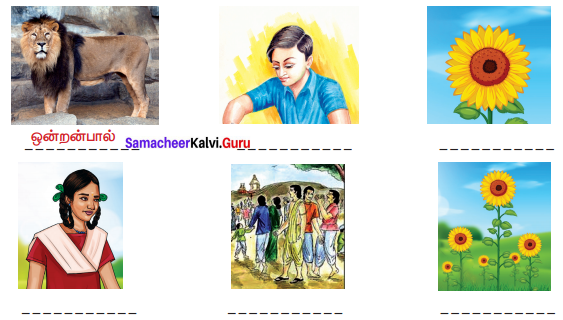
Answer:
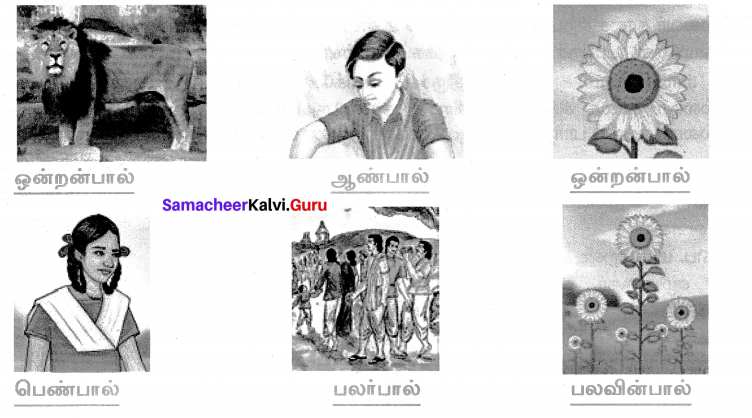
பிழையைத் திருத்திச் சரியாக எழுதுக
(எ.கா.) கண்ணகி சிலம்பு அணிந்தான். – கண்ணகி சிலம்பு அணிந்தாள்.
1. கோவலன் சிலம்பு விற்கப் போனாள்
கோவலன் சிலம்பு விற்கப் போனான்.
2. அரசர்கள் நல்லாட்சி செய்தார்.
அரசர்கள் நல்லாட்சி செய்தனர்.
3. பசு கன்றை ஈன்றன.
பசு கன்றை ஈன்றது.
4. மேகங்கள் சூழ்ந்து கொண்டது.
மேகங்கள் சூழ்ந்து கொண்டன.
5. குழலி நடனம் ஆடியது.
குழலி நடனம் ஆடினாள்.
கடிதம் எழுதுக
நீங்கள் சென்று வந்த சுற்றுலா குறித்த உங்கள் நண்பனுக்குக் கடிதம் எழுதுக.
சென்னை
01.04.2019
அன்புள்ள தோழனுக்கு,
வணக்கம்,
நலம் நலமறிய ஆவல். உன் குடும்பத்தில் உள்ளவர்கள் நலமாக இருக்கின்றார்களா? சமீபத்தில் நான் சென்று வந்த இன்பச் சுற்றுலா குறித்து இக்கடிதத்தில் குறிப்பிடுகின்றேன். நேரம் கிடைத்தால் நீயும் உன் குடும்பத்தினரோடு இன்பச்சுற்றுலா சென்று வா. அந்த அனுபவம் புதுமையாக இருக்கும்.
காஞ்சி கயிலாசநாதர் கோயிலுக்குச் சென்றோம். அங்கு சுற்றுச் சுவர், சிற்பங்களின் கலைக்கூடமாகத் திகழ்கிறது. அதே போன்று காஞ்சி வைகுந்தப்பெருமாள் கோயிலிலும் பல்லவர் காலச் சிற்பங்கள் மிகுதியாக உள்ளன. தெய்வ உருவங்களும் பிற சிற்பங்களும் கோயிலின் உட்புறச் சுவரில் செதுக்கப்பட்டுள்ளன.
மாமல்லபுரம், காஞ்சிபுரம், திருச்சி மலைக்கோட்டை போன்ற இடங்களில் காணப்படும் பல்லவர் காலச் சிற்பங்கள் சிறந்த கலை நுட்பத்துடன் அமைந்துள்ளன. இவற்றை எல்லாம் சுற்றிப் பார்த்த எனக்கு இன்பச் சுற்றுலா பயன் உள்ளதாக இருந்தது.
என்றும் அன்புடன்.
முகிலன்
உறைமேல் முகவரி
ச. வளவன்
த/பெ. மதிமாறன்
37, எழில் நகர்
சென்னை .
மொழியோடு விளையாடு
வட்டத்திலுள்ள எழுத்துகளைப் பயன்படுத்திச் சொற்களை அமைக்க.
Answer:
1. புதையல்
2. கடல்
3. கயல்
4. இயல்
5. தையல்
6. புயல்
7. புல்
8. இழை
9. இலை
10. கலை
11. கதை
12. இல்லை
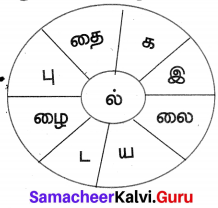
சொற்களை இணைத்துப் புதிய சொற்கள் அமைக்க
(எ.கா.) வாழை + காய் = வாழைக்காய்

Answer:
(i) வாழை + பழம் = வாழைப்பழம்
(ii) குருவி + கூடு = குருவிக்கூடு
(iii) விளையாட்டு + போட்டி = விளையாட்டுப்போட்டி
(iv) தயிர் + சோறு = தயிர்ச்சோறு
(v) அவரை + காய் = அவரைக்காய்
(vi) விளையாட்டு + திடல் = விளையாட்டுத்திடல்
(vii) பாட்டு + போட்டி= பாட்டுப்போட்டி
(viii) கொய்யா + பழம் = கொய்யாப்பழம்
விடுகதைகளுக்கு விடை எழுதுக
1. மரம் விட்டு மரம் தாவுவேன்; குரங்கு அல்ல.
வளைந்த வாலுண்டு; புலி அல்ல.
கொட்டைகளைக் கொறிப்பேன்; கிளி அல்ல.
முதுகில் மூன்று கோடுகளை உடையவன். நான் யார்?…..
Answer:
அணில்
2. என் பெயர் மூன்று எழுத்துகளைக் கொண்டது.
முதலெழுத்தை நீக்கினால் மறைப்பேன்.
இரண்டாம் எழுத்தை நீக்கினால் குரைப்பேன்.
மூன்றாம் எழுத்தை நீக்கினால் குதிப்பேன். நான் யார்?….
Answer:
குதிரை
3. வெள்ளையாய் இருப்பேன்; பால் அல்ல.
மீன் பிடிப்பேன். தூண்டில் அல்ல
தவமிருப்பேன்; முனிவரல்ல நான் யார்?…..
Answer:
கொக்கு
நிற்க அதற்குத் தக
என் பொறுப்புகள்
1. என்னால் இயன்ற அளவு மரக்கன்றுகளை நட்டு வளர்ப்பேன்.
2. இயற்கைச் சமநிலையைப் பேணிப் பாதுகாப்பேன்.
கலைச்சொல் அறிவோம்

